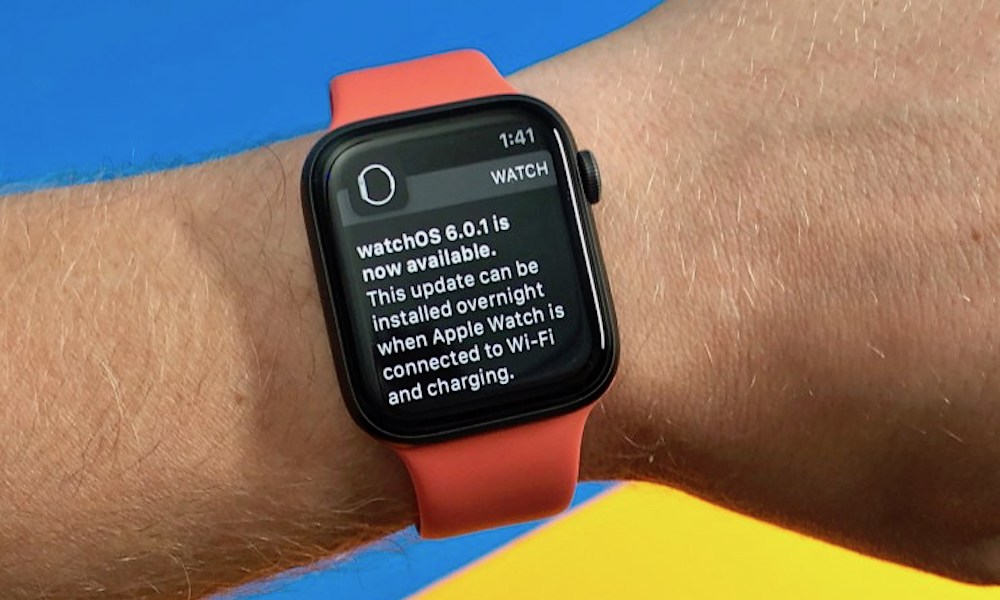Apple Releases watchOS 6.0.1, but Does It Improve Battery Life?
 Credit: Gotta Be Mobile
Credit: Gotta Be Mobile
Toggle Dark Mode
In addition to yesterday’s rapid-fire release of iOS 13.1.2, Apple has also pushed out its first maintenance update to watchOS 6, making some minor improvements and bug-fixes to the original version.
Released late yesterday, watchOS 6.0.1 resolves an issue with the classic Mickey Mouse and Minnie Mouse watch faces, which had somehow gone mute in watchOS 6.0 for some users, losing their ability to speak the time. This was somewhat ironic considering that watchOS 6 introduced the ability for users to hear Siri speak the time on all watch faces, although of course Mickey and Minnie do so in a far more distinctive way.
The release notes also indicate that the update addresses an issue with the calendar complication not displaying upcoming events, and “fixes a bug that could result in a loss of display calibration data.”
While Apple also says that the update includes performance updates, the real question that’s on the mind of many Apple Watch Series 5 users is whether watchOS 6.0.1 actually improves battery life.
Apple Watch Battery Issues
Since the Apple Watch Series 5 debuted last month, there have been numerous complaints that the new model, with its always-on screen, is sucking back the juice much faster than prior models did, to the extent that some users have given up on the always-on display, or even returned their shiny new Series 5 models to return to the now-less-expensive Series 4, which includes almost all of the same capabilities.
Of course, these reports have been mixed at best, and many reviewers have confirmed that the Apple Watch Series 5 gets its promised 18 hours of battery life without any issues.
Our own experiences have also borne this out, although we did have a 2–3 day “break-in” period during which battery life was abysmal, barely getting through a 12-hour day, before the Series 5 seemed to get onto a more normal cycle, even exceeding Apple’s 18-hour specs in some cases with no special power optimization tweaks at all.
Although it’s easy to assume that the new always-on display is the source of the problem, the varied reports indicate that this isn’t necessarily the case.
Further, Apple has specifically designed the display to use as little power as possible by refreshing only once per minute when it’s in low-power standby mode — that is, any time the screen would normally turn off on an older Apple Watch model. Further, many users who were experiencing problems initially didn’t find any improvements after disabling the always-on display, so clearly there’s something else going on here.
Another possible culprit was recently suggested as the new noise detection app in watchOS 6, which has the ability to run in the background to alert you to high noise levels. Some users have reported success by turning this off, but again this is by no means a universal fix that’s solved the problem for everyone. Other users have tried even more extreme measures, turning off things like workout detection and walkie talkie.
watchOS 6.0.1
With all of the varied reports of problems with battery life that has made users reluctant to pick up the Apple Watch Series 5, we’d think that if Apple had addressed the issue in watchOS 6.0.1, it would be quick to mention that in the release notes.
The absence of this suggests that watchOS 6.0.1 doesn’t include any specific improvements for battery life, but we think it’s certainly worth updating anyway.
Developers using the watchOS 6.1 beta have also reported that it has improved their battery life, but with only anecdotal evidence it’s difficult to say whether this is due to fixes in watchOS 6.1 or due to other factors, especially considering that beta versions of Apple’s operating systems often consume more battery due to additional debugging code that runs in the background.
Sometimes a mere update — or even just a restart of your Apple Watch — can resolve something that’s been spinning away in the background eating up your battery, and from all of the reports we’ve seen, a background process using more power than it should would definitely seem to be the most likely culprit here. It just seems that nobody has yet figured out which process this is.






